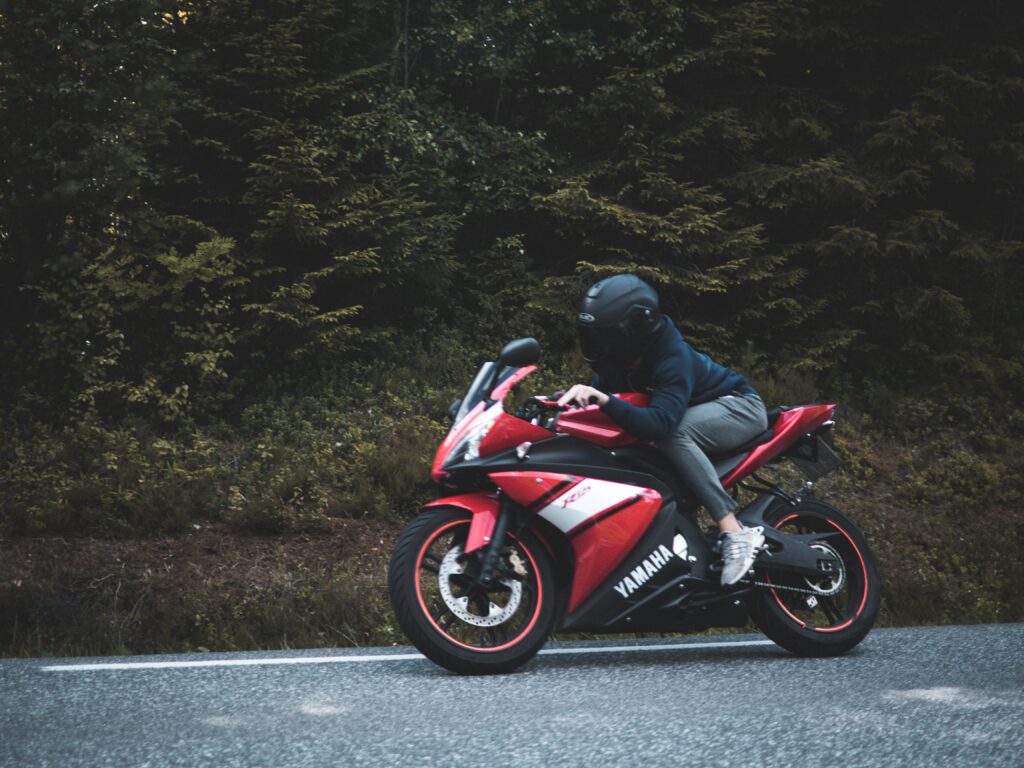Many people enjoy riding motorcycles as a hobby, and the fall is the perfect time to ride. The weather is mild and you can enjoy the changing leaf colors.
With that being said, there are inherent risks of riding a motorcycle.
It’s important to be a conscientious motorcycle rider and make sure you’re taking all the proper steps to keep yourself, your passengers, and other drivers safe.
By learning rider technique, you can reduce the risk of a crash.
The following are things to know to stay safe on a motorcycle.
Always Wear the Right Gear
One of the most dangerous things a motorcycle rider can do is not always wear the right gear.
You should wear a full-face helmet approved by the Department of Transportation. If a motorcycle helmet is DOT-approved, it will have a sticker identifying it as such.
Your helmet should also be comfortable, strong, and lightweight. It will help reduce wind noise and fatigue if you invest in a good quality helmet.
Along with your helmet, you want a leather or reinforced jacket, full pants, gloves, and footwear that goes over the ankle.
If you’re riding when the weather is hotter, look for a jacket made of breathable mesh.
For eye protection, use googles or a helmet visor.
Be a Defensive Rider
Just like defensive driving can save your life when you’re behind the wheel of a car, it’s a similarly important concept when you’re on a motorcycle.
You want to always make sure that you’re alert and vigilant. Work to anticipate what other drivers will do, but never assume they’re going to do the right thing.
Watch for cars that suddenly pull out of side streets or change lanes quickly and without signaling.
Always keep a safe distance from other vehicles, so you have plenty of stopping distance if you need to react.
As well as defensively watching other motorists, watch for road hazards.
Even seemingly small things on the road like a pebble or wet leaves can be disastrous if you’re on a motorcycle.
If you can’t entirely avoid a roadway hazard, try to slow down as much as possible before you reach them and limit your steering input.
Be Especially Careful at Intersections
In around 70% of accidents with two vehicles involving a motorcycle, the passenger car driver just doesn’t see the motorcycle.
In the majority of those accidents, the car driver violates the right of way of the motorcycle rider, leading to an accident. An intersection is where this is the highest risk of happening. If a driver doesn’t see a motorcyclist, they might turn left in front of them or right into the motorcycle.
Keep this in mind if you’re on a motorcycle, and you approach an intersection.
Scan all parts of the intersection before entering, and if you think a vehicle looks like it’s planning to turn left, slow down and prepare yourself for what could happen.
Don’t Let Your Mind Drift
A big part of the appeal of riding a motorcycle is that it’s a time when you can relax and unwind. However, if you let yourself space out, it can be dangerous or deadly.
You should always ensure your mind is engaged if you’re on a long trip on your bike.
There’s a concept called SEE promoted by the Motorcycle Safety Foundation. SEE stands for search, evaluate, execute. This is a way to keep your mind focused. You’re using your eyes always to monitor roadway and traffic conditions. You’re doing an evaluation of possible risks, and you’re quickly creating plans and actions to avoid problems.
Plan Accordingly Based on the Weather
The weather can be incredibly dangerous and detrimental if you’re on a motorcycle. Always check the forecast before you head out and if you’re out and see something that looks like it could be problematic, try to get off the road as soon as you can.
Wet and icy roads are the worst conditions for a motorcycle. When you’re on a motorcycle, you don’t have the stability you have with a car, and you don’t have the protection of a windshield.
If it’s raining, you also lose your visibility.
Finally, don’t have a passenger unless you’re extremely comfortable riding with someone else. Make sure your passenger also has all the right gear, including a helmet and protective clothing.
Your passenger needs to know what to do if you need to stop or take a corner, so get some practice together in a safe environment before you take to the roadway.

